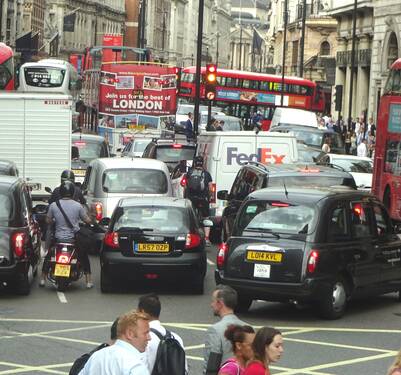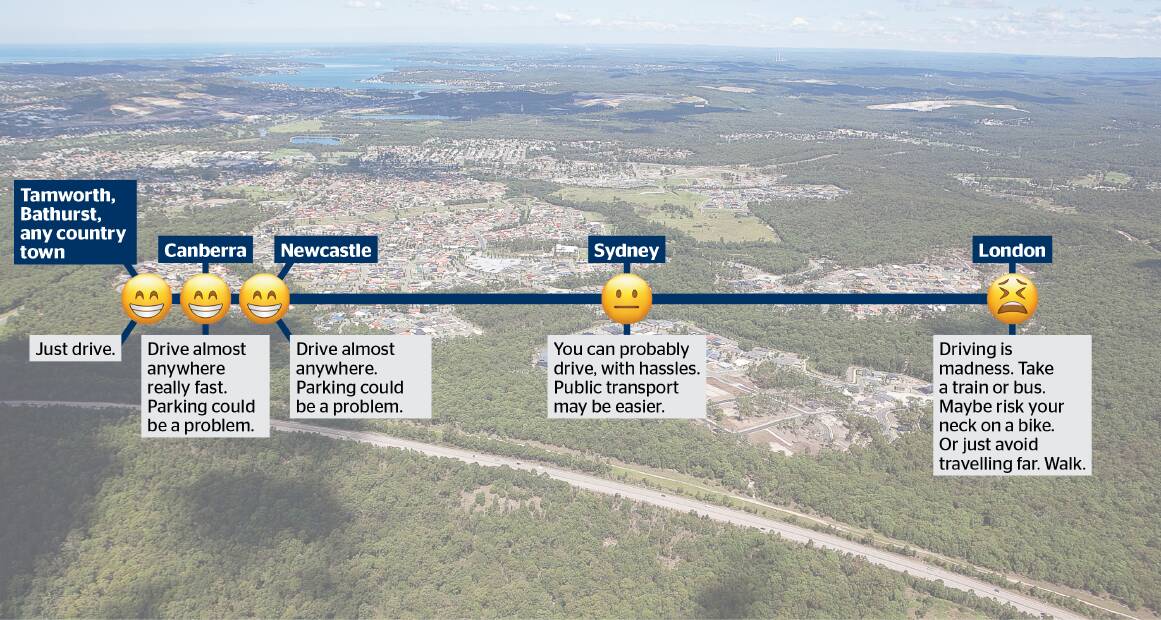
Newcastle's anti-car fanatics really should move to London.
They'd be happier if they lived there, and so would the rest of us.
They'd be happier because, in London, they'd find a city that has the problems that need their solutions.
The rest of us would be happier because we could just get along with arrangements for a comfortable city that suits transportation by private motor vehicle, by far the most convenient means of getting around.
Our driving drives the anti-car fanatics crazy - just because it is driving, an activity they think is fundamentally wrong. So at every turn they're looking for a way to stop it.
The fanatics include Newcastle council and officials of the state government, urged on by noisy campaigners and overseen by ministers who should know better.
They work relentlessly to transfer road access from motor vehicles to saintly bicycles. Speed limits keep falling, sometimes for no obvious reason than to punish driving, and there's an endless campaign to obstruct streets with speed humps. The state rarely improves our major urban roads and wouldn't make plans for new ones in a pink fit.
Transport for NSW probably will soon announce plans for a busway along Tudor and Belford streets as an alternative, or perhaps precursor, to a tram line. Watch out for how much road space it wants to take from general traffic.
All this is from the playbook of cities that are far larger and denser than Newcastle, cities where use of private automobiles does need to be discouraged and where people must accept the inconvenience of public transport.
We are not there yet. We are nowhere near it. The population of Greater Newcastle is about 600,000, but, in general, getting around the city by car is a breeze. And long may it remain so.

Here and there we have main roads that are overloaded, notably the Newcastle Link Road. The answer is to widen them, improve intersections and build new and better routes.
The standard criticism of building and improving roads is that doing so encourages more people to drive, generating more disturbance. But it's a sour view that focuses only on costs, not benefits.
If more people are driving, more people are enjoying convenient travel. Isn't that a good thing?
You'd have to be pretty biased to ignore the general delight in the community when (oh so rarely) Newcastle gets a new or improved major road. We'll see that in a year or two when Transport for NSW completes extension of the Newcastle Inner City Bypass and widening of Hexham Straight.
If the anti-car fanatics are right - if adding road capacity to a city of Newcastle's size only creates problems - then the people of Canberra should be writhing in agony. With a population comparable to ours, they have an amazing network of fast, high-capacity roads.
Do they complain as they whizz at 80 or 90 kmh from suburb to suburb? Hardly.
Still, the process of adding road capacity can't go on forever as a city grows, because eventually traffic will thicken too much in places where too many people live, work or shop. So we'd better think about how Novocastrians will get around when there are 1 million or even 2 million of them.
We need long-term planning. This is where the anti-car brigade could usefully direct its energies. If they don't want to move to London and joyfully hammer car usage there, they could help to work out where we should reserve land here for future public transport routes.
But no one is interested in long-term planning for Newcastle. Looking decades ahead is something the state government did decades ago. Not now.
The graphic accompanying this article shows our situation.
We're hardly less comfortable in getting around by car than are the people of a country town. Compared with them, our main differences are those stretches of arterial road that need relief and, here and there, a lack of parking spaces.
As our population grows and our streets densify, we'll edge out of that comfort zone. But how fast we do so depends on how well we prepare.
Part of the planning should be for improved and new roads, making us a bit like lucky Canberra - and nothing like unlucky London, which was big even before the automobile was invented and could never be well adapted to its use.
Future Novocastrians will never complain that we left them with good roads and reservations. You won't find a city that regretted having a major road and decided to close it and build houses on it.
In fact, major cities all over the world struggle to find new routes and are often forced into the expense of tunnelling.
It is indeed the height of arrogance for today's anti-car politicians, officials and campaigners to decide that our successors must not have more road capacity.
What our successors build and whether they manage traffic with, for example, usage charges will be up to them.
Our responsibility is to keep their options open.
But do we have any opportunities to leave for them? Yes. Lots.
There's space for motorways along the eastern, western and northern sides of Lake Macquarie and for one under it.
We're facing a now-or-never decision to preserve a precious corridor from McDonald Jones Stadium to Port Waratah that could ultimately extend under the harbour to Stockton and Nelson Bay.
Maitland could have a southern bypass, and the state must, but won't, provide for arterial roads for a planned urban extension to Branxton.
And of course we can provide a fast link from Wallsend to Mayfield that we already need for easing pressure on Newcastle Road.
The problem isn't lack of opportunity. It's anti-car fanaticism.







